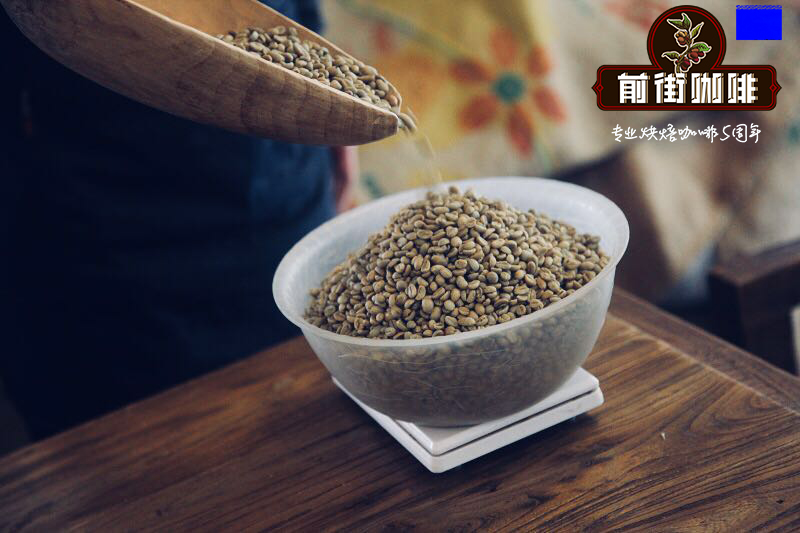Roasting of coffee beans | what are the roasting defects in coffee | which belong to baking defects

Professional coffee knowledge exchange more coffee bean information please follow the coffee workshop (Wechat official account cafe_style)
Some of the defects in coffee flavor come from the defects of raw beans, some are caused by baking, and some are caused by brewing. Today, Qianjie Coffee will first talk to you about what defects will occur in roasting.
Definition of baking
The so-called coffee roasting (coffee roasting) refers to the process that through heating the raw beans, a series of physical and chemical reactions take place inside and outside of the coffee beans, and in this process, the sour, bitter, sweet and other flavors of the coffee are formed, forming mellowness and hue, and transforming the raw beans into dark brown beans.
Baking Baking
* Baking this baking defect looks no different from normal baking and can only be distinguished by "drinking"!
Coffee beans absorb very little heat in the roaster, absorbing less heat, and the total baking time is prolonged. The aroma of coffee beans is characterized by fast volatilization, long baking time and natural loss of aroma. The coffee baked in this way has a weak aroma, with the smell of grain and toast.
You can imagine what a bread will taste like if it is baked over low heat for a long time in the oven.
Cracked bean Chipping
In the process of coffee roasting, there are two bursting processes. The first burst is that there is water in the raw coffee bean fiber, and the water cannot come out. The pressure is caused by heating. When the coffee bean cell wall can not withstand this pressure, the coffee bean will crackle and burst. The second explosion is because the coffee bean itself is a wood fiber mechanism, and the coffee bean produces the physical phenomenon of pyrolysis due to combustion and heating, which makes the sound of wood structure rupture. "have a bang..."
* Coffee beans burst the cell wall for the first time by pressure
Okay, back to the point, what we call cracked beans is the coffee beans produced when the second explosion occurs. Why does the surface of the coffee beans crack? The reason is that coffee beans absorb less heat during the first explosion, and the expansion rate is not enough, resulting in more heat absorption on the surface, less heat absorption in the interior, and great difference between internal and external softness and hardness when the second explosion occurs. When the second explosion occurs, the surface with low density falls off. (dense coffee beans are also prone to this defect.)
* the second bursting of the wood structure of coffee beans
Top scorched TIPPING
This roasting defect is actually good and bad. Coffee beans have the lowest density at both ends, and the lowest density absorbs more calories. If it is shallow roasting, more heat absorption at both ends may bring sweetness, but if it is deep roasting, both ends absorb too much heat. It is easy to produce carbonized flavor and smoke smell when extracting coffee.
Locally charred Scorching
Before talking about this roasting defect, we first understand the three heat sources of the coffee roaster, namely, heat convection, heat conduction and heat radiation. The machine with more heat convection is not prone to local scorch, because the coating of hot air is good, and the heat absorption of beans is more "comprehensive". Then the roasting defect of local coke is easy to occur in the machine with more heat conduction and heat radiation, because these two heat sources have fast heat conduction velocity and low conduction efficiency. So it is easy to cause a "point" to absorb too much heat.
In modern roasters, most of them are machines with a lot of hot air, so this defect is not easy to occur. Generally speaking, this kind of defect is easy to occur in the roaster with more hand net baking and heat conduction.
Fast baking underdevelopment
* Fast baking (underdeveloped) is not much different from normal baking with the naked eye, and has nothing to do with the degree of baking. Don't think that shallow baking is fast baking. Fast baking actually means that the total baking time is too short (here, excluding the variables of different brands of baking machines, discuss under the premise of normal baking)
END
Important Notice :
前街咖啡 FrontStreet Coffee has moved to new addredd:
FrontStreet Coffee Address: 315,Donghua East Road,GuangZhou
Tel:020 38364473
- Prev

Which brand of coffee press is recommended? which brand is good? what brand is good?
Professional coffee knowledge exchange more coffee bean information Please follow the coffee workshop (Wechat official account cafe_style) many coffee lovers like to collect and try to play with all kinds of coffee utensils, but the French kettle always seems to be the neglected existence, may also really think that the way of making coffee is too simple and rude? In short, there are few people around you who devote themselves to understanding the Dharma.
- Next

How to improve the shortcomings of the kettle? what kind of coffee beans is the kettle suitable for? The correct use of the pressure kettle
Professional coffee knowledge exchange more coffee bean information Please follow the coffee workshop (Wechat official account cafe_style) tips written in the front: French press can also use coffee filter paper coffee liquid leached from the kettle has a lot of suspended matter, if you want to reduce residue precipitation, you can actually add a piece of filter paper under the filter, after filtration, you will find that a lot of residue is intercepted on the filter paper.
Related
- Beginners will see the "Coffee pull flower" guide!
- What is the difference between ice blog purified milk and ordinary milk coffee?
- Why is the Philippines the largest producer of crops in Liberia?
- For coffee extraction, should the fine powder be retained?
- How does extracted espresso fill pressed powder? How much strength does it take to press the powder?
- How to make jasmine cold extract coffee? Is the jasmine + latte good?
- Will this little toy really make the coffee taste better? How does Lily Drip affect coffee extraction?
- Will the action of slapping the filter cup also affect coffee extraction?
- What's the difference between powder-to-water ratio and powder-to-liquid ratio?
- What is the Ethiopian local species? What does it have to do with Heirloom native species?

